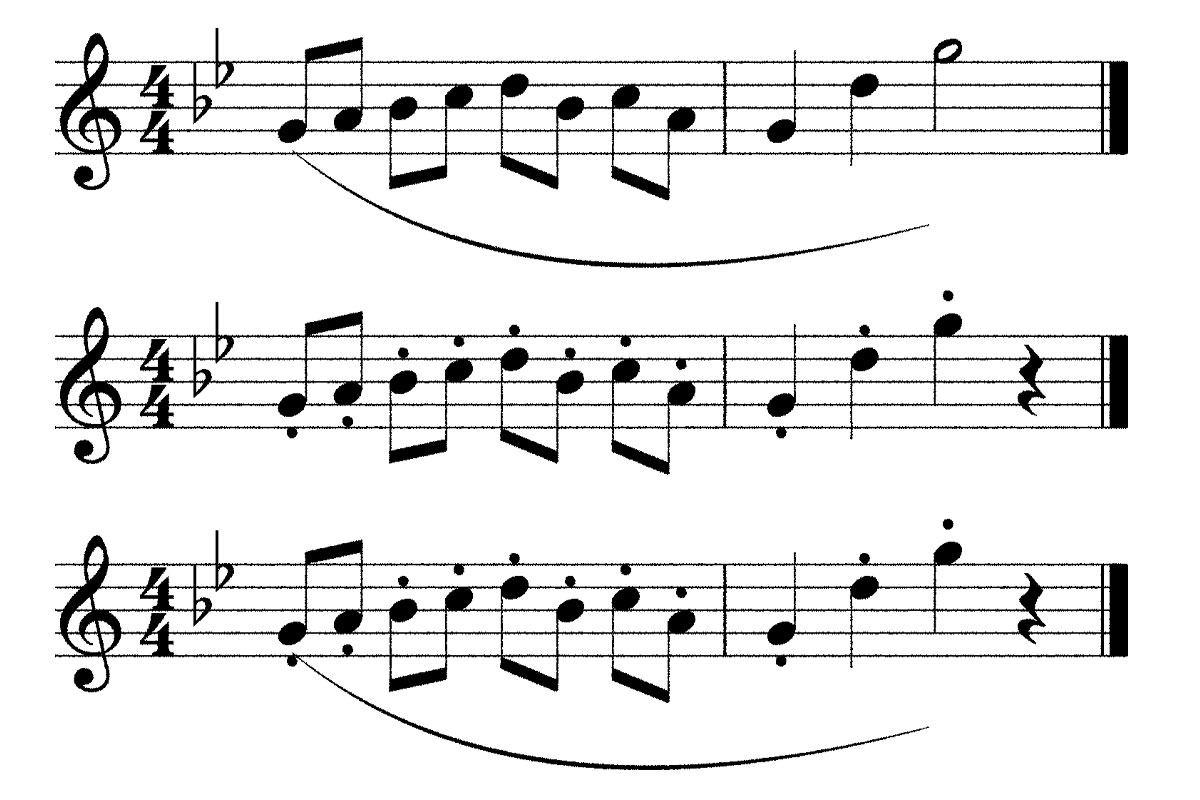Let’s explore the expressive potential of the three most common ways to articulate the notes in a phrase: Legato, Staccato & Portato…
Legato
Legato (Italian for “tied together”, indicated by a sweeping curved line that connects the notes, means to play a string of notes so that they sound smoothly connected and flowing, as if they were all sung with a single breathe.
Because of the rapid decay of each tone, “legato” on the piano is just an sonic illusion created by expert timing and controlled dynamics using an integrated flowing gesture.

Importantly, it’s not enough for the notes to simply sound “connected”. They must also sound as if they are played with the same character.
Staccato
Staccato (Italian for “detached”), indicated by a dot above or below the note head, means to play a string of notes in a short, crisp manner, unconnected and very distinct from each other, as if they are sung with separate quick, impulsive breaths. As such, a staccato phrase should be played as a series of individual impulses superimposed on a larger unifying impulse.

Portato
Portato (Italian for “carried”), indicated as shown below, means to play a string of notes in a slightly unconnected manner.

Sometimes called mezzo staccato or non-legato, portato is not as short and sharp as staccato. The duration of each note is typically shortened only slightly from its full written value. A portato phrase should be played as a series of distinct individual impulses superimposed on a larger unifying gesture.
Of course, mixing and matching articulations in a single phrase adds a whole new level of artistry to your playing.
Here, for example, is a mixture of legato and staccato…


Leave a Reply